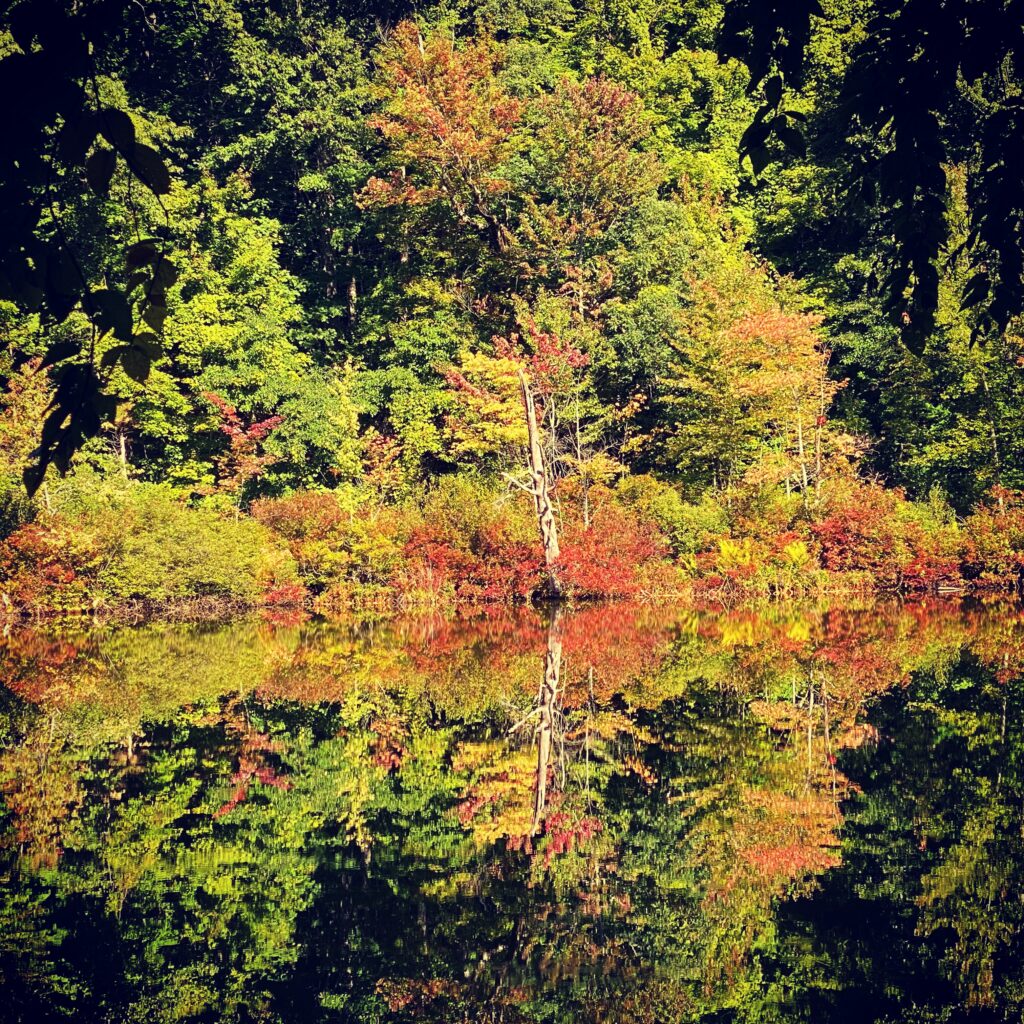A poetic summary inspired by Chapter 6 (Through the Year) of D.D. Cox, A Naturalist’s Guide to Forest Plants: An Ecology for Eastern North America, Syracuse University Press, Syracuse NY (2003). A strange combination of free verse and bullet points. Are they really different? No claims are made that this is good poetry. Interestingly, each time it is revisited, words can easily be rearranged. It is a living draft.

The deciduous forest has four distinct seasons, only loosely correlated with the calendar seasons …
Start …
Autumnal Coloration
Days grow shorter, nights longer, signaling the trees
Responding, they close down summer activities
Water to leaves cut off by abscission layer
Oranges and yellows revealed as green chlorophyll fades
Then red pigments are produced
Colorful autumnal flowers and fruits come forth
Winter’s Descent
Leaf cells die, colors fade away
They break off at the abscission layer
Brown insulation, dead leaves below skeleton trees
The seldom freezing ground sustains tree life
Patches of green intersperse the browns and grays
Some from trees, others from plants
Colorful berries persist and nourish
Evergreen’s embellish winter’s drabness
Leafless trees known by twigs, buds, scars, pith, and bark
Vernal Buds
Abscisic acid inhibits buds through winter’s grasp
They swell when temperatures rise with lengthening days
Calendars are irrelevant in the north
April, or May, brings ecological spring
Alarm clock of warmth and daylight awakens the forest
Tree growth commences
Forest flowers bloom in their time in the sunlight
Light reaches the forest floor, its warmest season
Spring plants complete their life cycle before summer’s shade
Masses of pollen produced, spread by fickle winds.
Summer’s Leaky Green Umbrella
Trees create the leaky green umbrella
’Tis their only period of leaf growth
Canopy closure drops forest-floor temperature
Nature’s air conditioning
Next spring’s buds emerge
Trees known by leaf and bark
Leaves grow in opposing or alternating pairs
Simple or compound in nature
Maples, ashes, and dogwoods with opposite leaves
Alternate leaves shown by many more
Basswood, cherry, chestnut, elm, hickory, locust, oak, sassafras, walnut
Bark patterns are often unique
Fruit, nuts, and seeds emerge then propagate
Go To Start…
Next up; ???